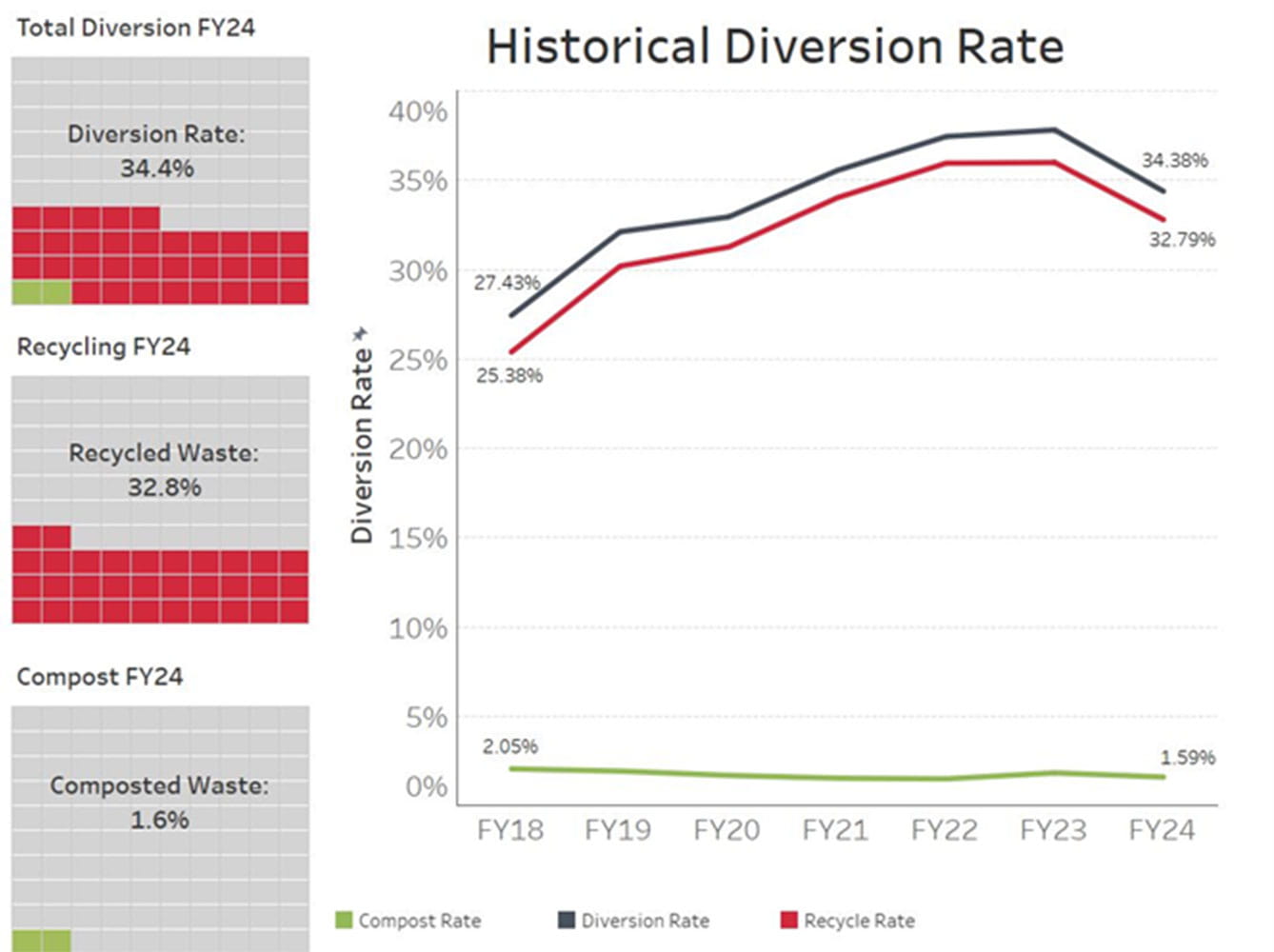Hospitals produce an average of 29 pounds of waste per patient stay. Health care’s complex waste stream is also expensive, with regulated medical waste costing 10 times as much as solid waste. The medical center is committed to preventing waste upstream and managing it appropriately through landfill diversion, recycling, composting and ensuring items end up in the correct waste stream.
- We improved the diversion rate to 34% with efforts such as expansion of recycling infrastructure, collecting new types of clinical plastics for recycling, and food waste reduction efforts.
- The Stericycle reusable sharps container program, launched in 2021, has diverted over 100 tons of plastic from landfills since its implementation. In FY24, the program prevented 30 tons of plastic waste.
- In fiscal year 2024, the medical center diverted over 198 tons of food waste from landfills. This included 170 tons of pre-consumer food waste processed by a digester (converting food waste into liquid for drainage), 9 tons donated, and 20 tons composted.
Historical diversion rate
 Image above: This graph illustrates a historical diversion rate of waste, with FY24 achieving a total diversion rate of 34%, including 32.8% recycled and 1.6% composted.
Image above: This graph illustrates a historical diversion rate of waste, with FY24 achieving a total diversion rate of 34%, including 32.8% recycled and 1.6% composted.
